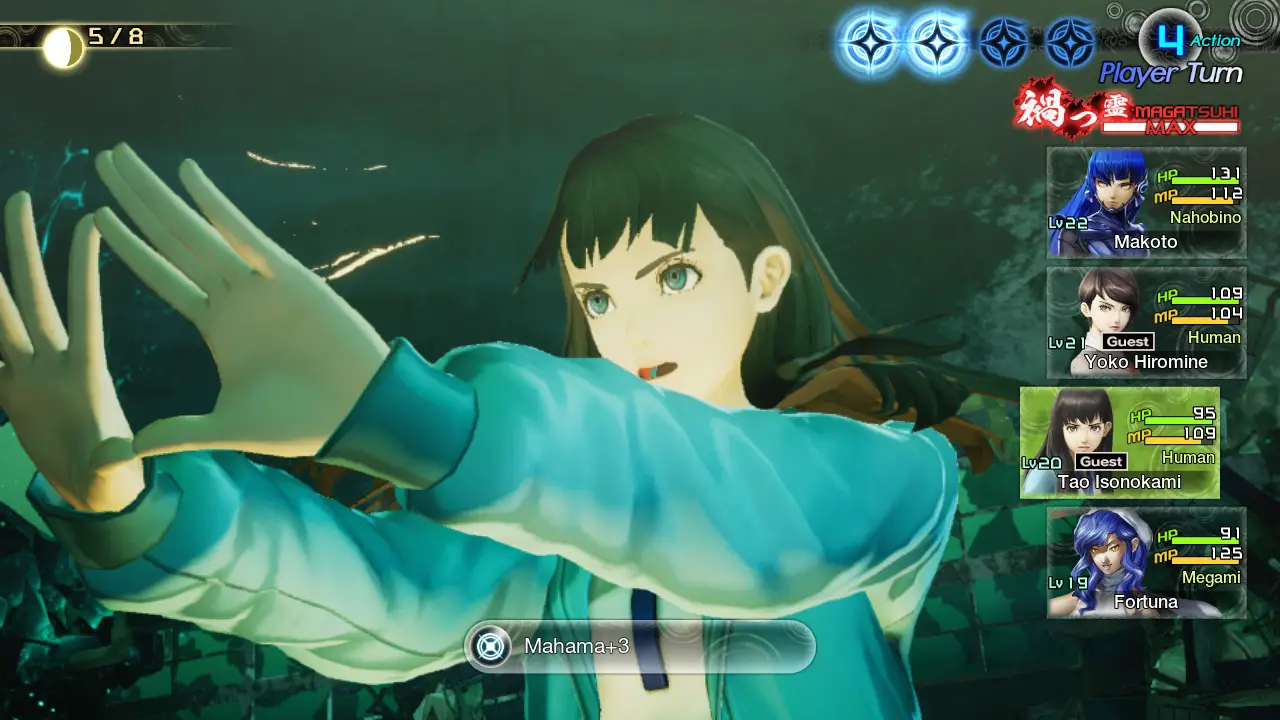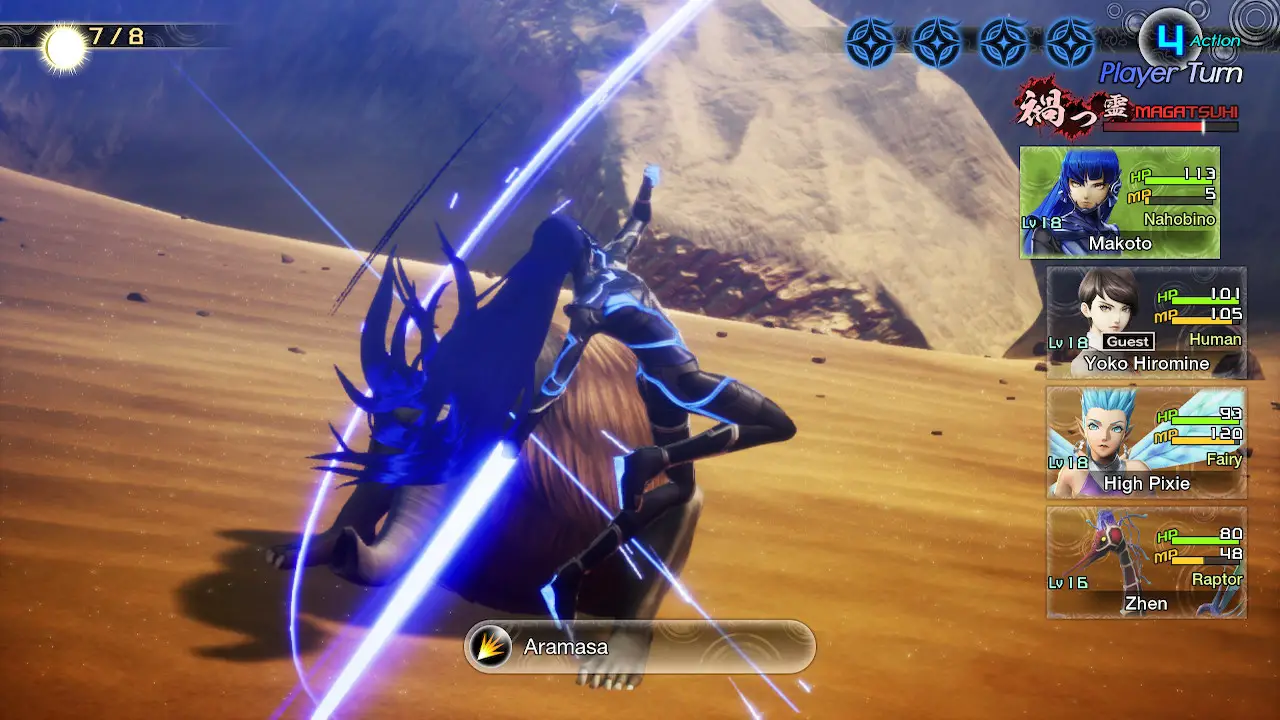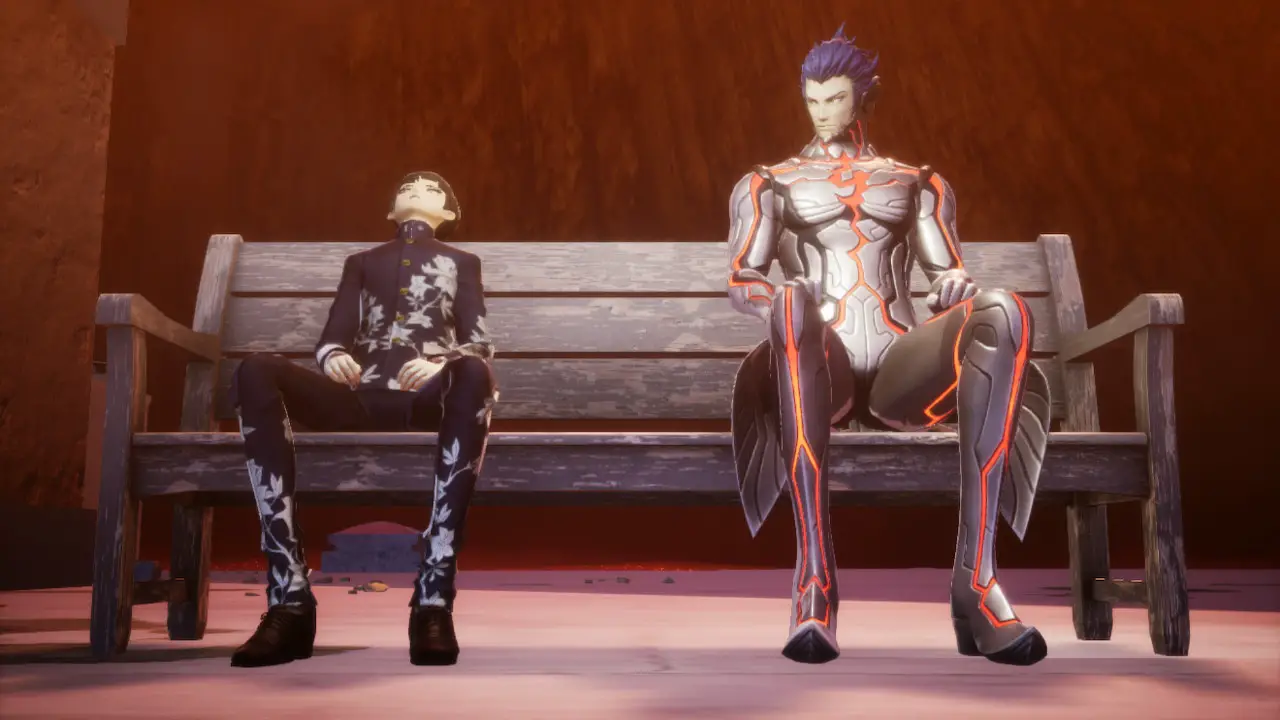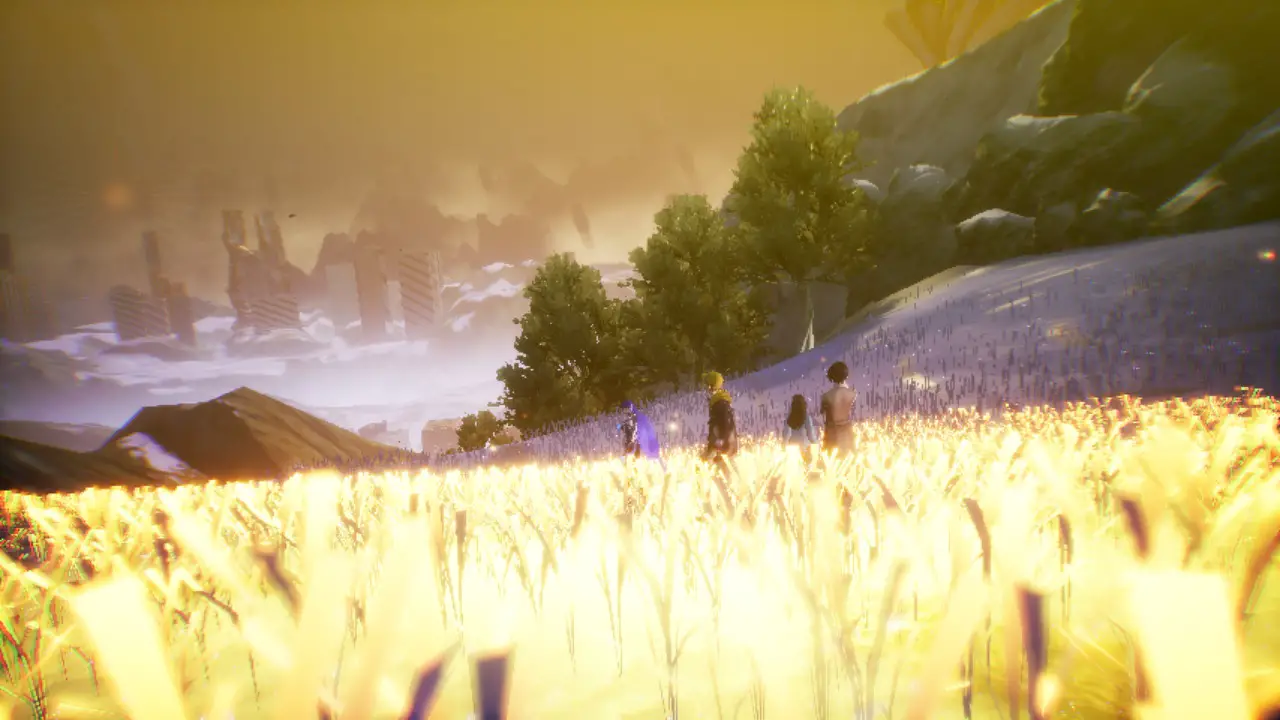Sitting atop the throne of God, you wonder how your journey here could have gone differently. Who’s lives could you have saved or ended? Could new powers have allowed you to further assert your will? Or would share the burden with others? Such musings can be dangerous for a god, for at the end of this path lies only vengeance.
Shin Megami Tensei V: Vengeance is an enhanced rerelease of the fifth mainline entry in the Shin Megami Tensei series, though it feels like a complete redo of that game. Vengeance adds several tweaks and mechanics, though its main draw is the entirely new storyline: the Canon of Vengeance. You choose between this new story or the original Canon of Creation by taking the mysterious girl’s hand at the start of the game or leaving her alone. Like a lot of ATLUS rereleases, Vengeance adds a single new character to the main cast, Yoko Hiromine, though in this case she drastically changes the course of the adventure. While the first area is mostly the same, after that is when the changes really begin, though you may miss out on some story beats having not played the Canon of Creation first.
The Canon of Creation’s story, in retrospect, is far from the best SMT story out there, with hardly developed characters who essentially serve as standees for their respective ideals. While I certainly enjoyed it, it’s one of the most prevalent criticisms of the original. . Enter the Canon of Vengeance, which I would say puts the story on par with or at least close to my favorite entry in the series, SMTIV. Characters like Tao, Yuzuru, and Dazai feel so much more proactive rather than reactive. Miyazu is still pretty flat, but she really only serves as motivation for her brother Yuzuru. That’s disappointing, but Vengeance really puts the focus on your other female companions, Tao and Yoko. They join your party for most of the story this time around, fighting alongside the protagonist in battles and frequently chiming in during cutscenes. Eventually, the story changes so drastically the second to last area is replaced by the new Shinjuku before going back to the finale and resembling the Canon of Creation somewhat.
Let’s back up a bit for now and go over the basics, though. You can read my review of the original game right here, but here’s the rundown. You’re a normal boy living in Tokyo, when suddenly, a tunnel takes you to a post-apocalyptic version of your home, covered in desert sands and infested with demons. Before being soundly killed by said demons, a robotic man appears, telling you to take his hand if you want to live. You do so, and the two of you are fused into a powerful, god-like being called the Nahobino. Together, you’ll battle gods and demons alike, recruit fiends to your side, and take your place on God’s throne to recreate the world in your image. It’s a lot to process upfront and unfortunately neither story does much to elaborate on why this all happened to the main character specifically. But in a way, that’s good. You’re not sitting through hours of cutscenes to get to SMTV’s best element: the gameplay.

The Press Turn battle system returns again for Vengeance, though with a few tweaks. Assuming you have a full party made of the Nahobino and three demons or human companions, you begin each turn with four icons in the top right. These represent how many actions you can take during your team’s turn. Performing an action, like casting a spell or attacking, will use up one of those icons. However, landing a critical hit or hitting an enemy’s weakness will cause one of those icons to glow, rather than using it up. By continually hitting weaknesses or critical hits, your party can act up to 8 times in a single turn. This allows you to finish most normal encounters in a single round which is incredibly satisfying.
In battle, you can also talk to a demon to attempt to recruit them to your side. This involves responding to their nonsense with whatever dialogue option they may want. It’s intentionally inscrutable, but that’s part of the difficulty and fun. A demon may ask you about your hair care routine or your philosophy on violence, you never know. Once you have them on your side, you can add them to your party to level them up or fuse them with other demons to create more powerful allies. Demons and guest characters also now come with passive abilities, new to Vengeance. These don’t make a huge difference, and are moreso nice bonuses to have though you can ignore them if you wish.

More substantially, completing certain quests or talking to certain NPCs will grant you items to unlock new Magatsuhi abilities. These have certain requirements, like having a specific type or alignment of demon in your party, but are incredibly powerful. One might deal severe Almighty damage to a single target, while another will fully heal and revive your entire party including demons in reserve only using up the Magatsuhi meter and not an action. Later on in the game, the Nahobino gets an incredible Magatsuhi ability that allows his next action to occur four times in a row. The game fully expects you to use and abuse these, because your enemies will be doing the same. SMTVV, and the series as a whole, is not for the faint of heart but luckily there are three difficulty options to help more people enjoy the game at their own pace, whether that means a more casual experience or something for long-time fans to test their metal.
While demons can learn new abilities as they level up, the Nahobino must be customized using Essences, which you find in the field or as a reward for unlocking every skill on a demon. You can also use Essences on demons to further customize them, though I refrained from using this until the very end of the game to prepare my party for the final gauntlets. As you find collectables in the overworld, you’ll also be rewarded with Glory. You can spend Glory to enhance the Nahobino’s abilities, unlock more skill slots for him and your demons, expand your demon stock to have more at once, and much more. Atlus RPGs are known for having a lot of player choice and SMTVV is no exception. Customizing your party, demons, and the Nahobino may seem daunting at first but play your cards right and you can get some pretty scary builds.

Keeping demons in your party for an extended period of time will cause their trust to increase. Once they reach a threshold, you can speak to them in the new Demon Haunt for random rewards like new skills, stat increases, or items. The randomness means a lot of these bonuses are useless, but occasionally you’ll be rewarded with something super useful like a high tier damage dealing spell. I do find demons want to speak with me a little too often, so I would build up a few before visiting the Demon Haunt again. However, as you progress the story, Aogami will also want to speak with the main character by disengaging the Nahobino form at a bench in the Haunt. This will give you three points to allocate to your stats. I already liked Aogami, but these little conversations help flesh him out even more, and even later on in the game your demons will comment on the protagonist’s changes in demeanor, giving him a little more character too.
You really need to consider your party, skills, and how you allocate the Nahobino’s stats carefully as even on the previously mentioned Casual difficulty, SMTVV can be tough. You can lean a bit on Yoko and Tao, but neglect the rest of your party and you’ll feel even more handicapped than usual. Playing on Switch, I was able to import my save from the original game to receive a few stat boosting items from the endings I unlocked and my post-game party of Amanozako, Idun, and Fionn mac Cumhaill, and while the stat boosts were helpful, I had to save up currency for most of the game to get those demons back from the Compendium. You need to plan ahead, and consider your first shot at any boss simply information gathering, as the game won’t go easy on you while you spend a few actions on learning weaknesses.

This is especially true in the Canon of Vengeance, as the new bosses will absolutely destroy you if you’re off your game for even a moment. These new bosses mostly come in the form of the new antagonist organization, the Qadištu. These four female demons will show up occasionally to battle you, and make for some of the most difficult encounters in the game. They have incredibly powerful attacks, so buffs and debuffs are a necessity, not an option. Outside of battle, they make for great villains with interesting motivations. Having concrete adversaries really helps tie the different parts of the story together, with characters anticipating the Qadištu’s next moves and acting accordingly. Their presence, just like Yoko’s, causes ripples throughout the plot that feel natural and lasts until the very final moments.
As you can probably guess, the Canon of Vengeance is a marked improvement on the Canon of Creation, though I would still say you’re better off playing through Creation’s story first. Parts of Creation’s story are still happening parallel to Vengeance’s, and a new player may be confused by certain developments that happen offscreen if they haven’t already experienced them firsthand. For example, everything that happens in Chiyoda is mentioned in passing a few times in the new canon as you can’t even go there in that storyline. It’s certainly a weird decision, but to put it another way, the Canon of Vengeance is to SMTV what SMTIV: Apocalypse was to SMTIV. It’s kind of a sequel, kind of not, but does rely on knowledge of the “previous game”. Not an absolute deal breaker but it’s something to keep in mind.

The music in V was already great, but Vengeance adds and remixes a ton of tracks to make everything feel fresh. Some already amazing songs return, like Dancing Crazy Murder, while others are entirely new and absolutely rock my socks. The battle theme in the original was the weakest track in my opinion, but its new remix instantly became one of my favorites. The soundtrack hones in on what made the original unique and leans into that, which is really something I would say about Vengeance as a whole.
As a final note, I mentioned a few bonuses for importing my save on Switch. While Switch is the only platform you can do this on, since the base game was only released on Nintendo’s console, you’re probably better off playing another version as Vengeance still runs poorly on Switch. It’s a little improved, sure, but far from ideal with even some pre-rendered cutscenes stuttering. Sure, it’s great not to have to rebuild my party, but by the time I could afford to summon them I could have already unlocked and rebuilt them anyway. This is a fantastic game, and deserves to be experienced in its full glory on more powerful hardware.
















